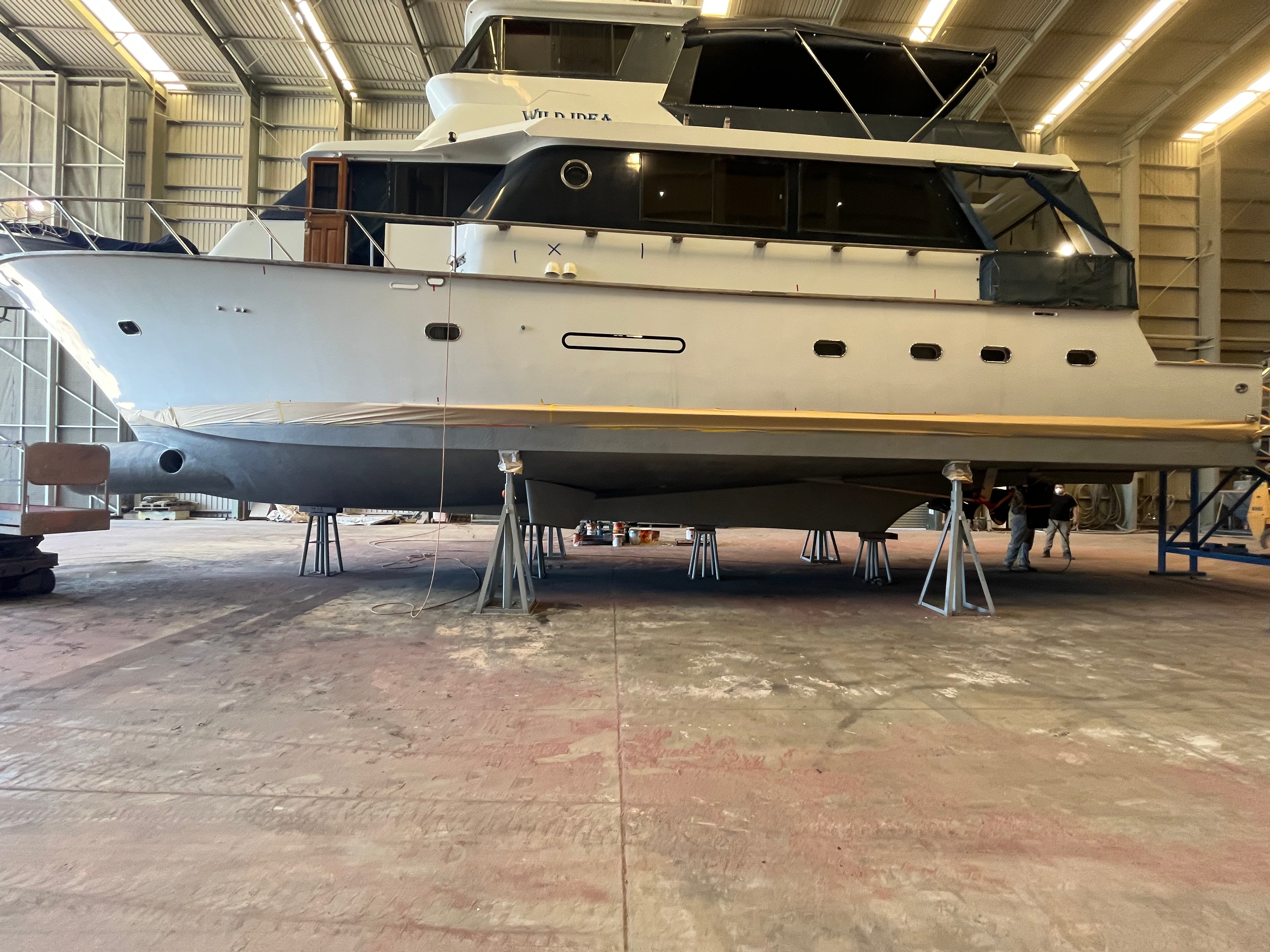Marine Horizons: Navigating Towards a Cleaner Future
Issue #1 | August 15, 2025
Welcome to the inaugural edition of Marine Horizons, your go-to newsletter for insights on sustainable boating practices, environmental stewardship, and innovative technologies shaping the seas. In this issue, we dive into a pressing challenge facing boat owners and the marine ecosystem alike: the shortcomings of traditional anti-fouling paints and their hidden costs. We’ll explore why these paints are falling short, the damage they’re inflicting on our oceans, and how Evolve Robotic Hull Cleaning is emerging as a game-changing, eco-friendly alternative.
The Failing Promise of Anti-Fouling Paints
For decades, anti-fouling paints have been the go-to defense against biofouling—the accumulation of algae, barnacles, and other marine organisms on boat hulls. These paints release biocides like copper or tributyltin (TBT) to deter growth, but mounting evidence shows they’re not as reliable as once thought.
One major issue is their dependency on constant water exposure to remain effective. If a boat is out of the water for extended periods, the paint’s protective properties can diminish rapidly, leading to quicker fouling upon re-immersion. Poor application is another common culprit: inadequate surface preparation, insufficient thickness, or missing the optimal “thumbprint tacky” stage during overcoating can cause blistering, delamination, or outright failure. Even when applied correctly, these paints don’t eliminate growth entirely—they merely slow it down, requiring frequent reapplication and maintenance.
In real-world scenarios, boat owners report rapid fouling despite fresh coats. For instance, some vessels show significant growth after just a few months in the water, with paints flaking or peeling at the waterline due to improper cleaning or environmental factors. This ineffectiveness not only frustrates owners with increased drag, higher fuel consumption, and reduced performance but also amplifies the need for haul-outs and reapplications, driving up costs and downtime.
The Environmental Toll of Anti-Fouling Paints
Beyond their performance issues, anti-fouling paints pose a severe threat to marine environments. These coatings work by leaching toxic substances into the water, creating a plume of pollution around vessels. Copper-based paints, the most common type, release cuprous oxide—a neurotoxin that repels fouling organisms but also harms non-target species like fish, shellfish, and algae.
Studies reveal alarming impacts: up to 40% of copper inputs into regions like the Baltic Sea come from these paints, leading to bioaccumulation in the food chain and ecosystem disruption. Tributyltin, once widely used but now banned in many areas due to its persistence, has caused widespread harm, including shell deformities in oysters and reproductive issues in marine snails. Even modern biocides persist in sediments, releasing back into the water during disturbances and affecting biodiversity.
The problem extends to boat maintenance: scraping or washing hulls releases paint particles into harbors, contaminating water and soil. In aquaculture settings, biofouling paints restrict oxygen exchange in nets, but their toxicity exacerbates pollution in confined marine areas. Overall, these paints contribute to broader issues like invasive species spread and habitat degradation, underscoring the urgent need for greener alternatives.
A Sustainable Solution: Evolve Robotic Hull Cleaning
Enter Evolve Robotic Hull Cleaning, a forward-thinking service that’s revolutionizing hull maintenance with technology that’s as effective as it is environmentally sound. Based in Australia and serving areas like Sydney Harbour, the Gold Coast, and Cairns, Evolve brings professional underwater drone services directly to your mooring—no need to haul out or relocate your vessel.
At the heart of their offering is the Keelcrab drone, an autonomous underwater robot equipped with specialized brushes that gently remove soft fouling such as algae, vegetation, and early-stage coral. Unlike aggressive methods, it doesn’t damage underlying surfaces, preserving any existing antifouling layers and extending their lifespan. Tests show no micrometric changes to the hull after multiple passes, ensuring safety for boats 10-24 meters in length, with coverage up to 95-97% on displacement hulls and 85-87% on planing or semi-planing ones.
What sets Evolve apart is its proactive approach: regular cleanings restore direct water contact with antifouling layers, preventing barnacle and “dog teeth” formation without relying solely on chemicals. This reduces the frequency of toxic paint applications, aligning with global calls for biocide-free solutions. Their VIP membership, starting at just $2.69 per day (less than a daily coffee), provides year-round care, saving thousands on fuel, repairs, and maintenance while minimizing environmental impact.
Founded by Captain Kane, a seasoned sailor with experience on a 68ft DeFever super yacht, Evolve emphasizes convenience and sustainability. Services include one-off express cleanings and pre-purchase inspections, all delivered hassle-free. By complementing or even reducing the need for traditional paints, robotic cleaning like Evolve’s represents the future—efficient, eco-friendly, and effective against fouling without the toxic fallout.
Charting a Greener Course
As boat owners and environmental advocates, it’s clear that clinging to outdated anti-fouling paints is no longer viable. Their waning effectiveness and profound ecological harm demand innovation. Evolve Robotic Hull Cleaning offers a beacon of hope: a robotic solution that cleans smarter, protects better, and preserves our oceans for generations.
Ready to evolve your hull maintenance? Visit www.evolverobotichullcleaning.
Stay tuned for next month’s issue on emerging marine tech trends. Fair winds!
Marine Horizons is powered by insights from reliable sources and innovative companies like Evolve. For questions or feedback, reply to this newsletter



Share:
Meet The Captain : Revolutionising Hull Cleaning from the Deck of a 68ft DeFever
Evolve Newsletter